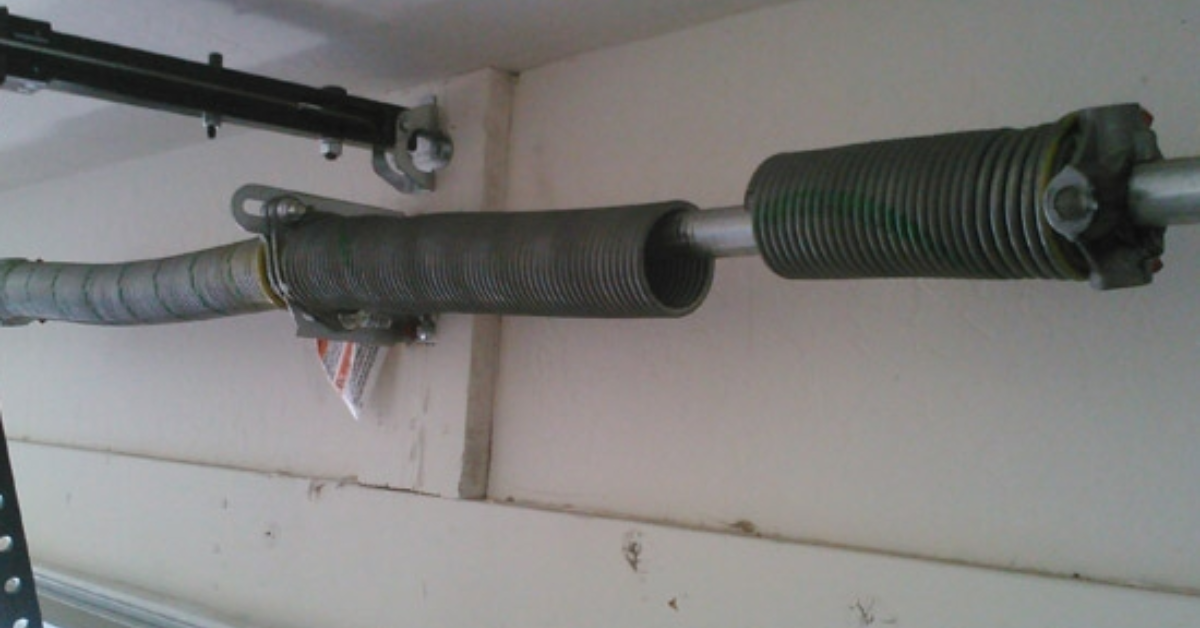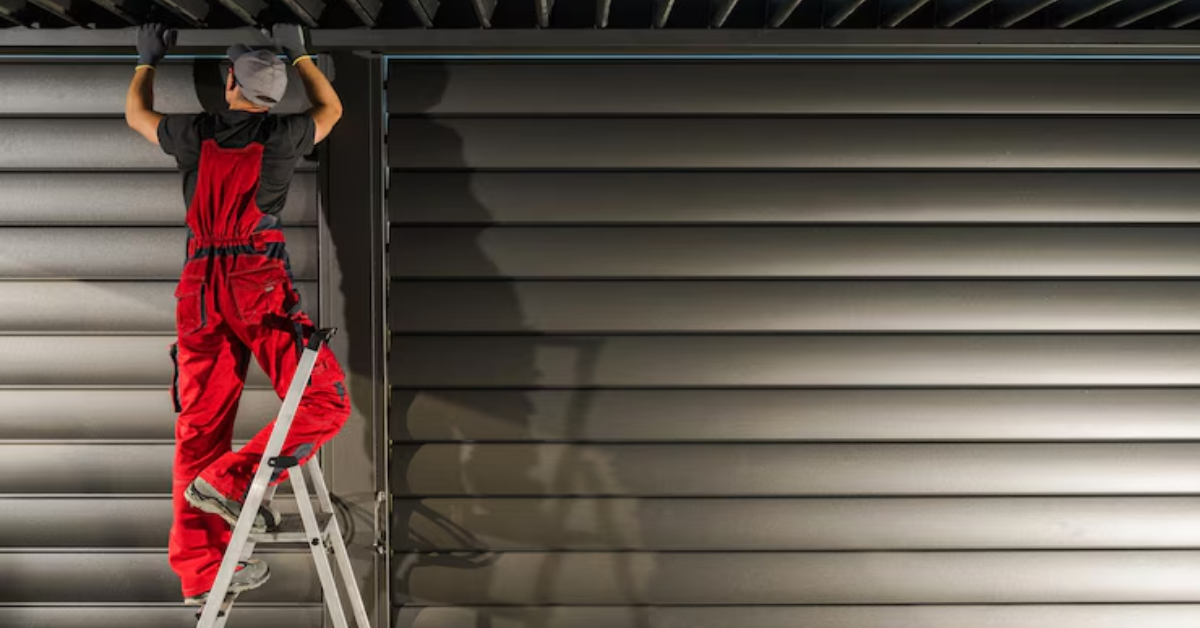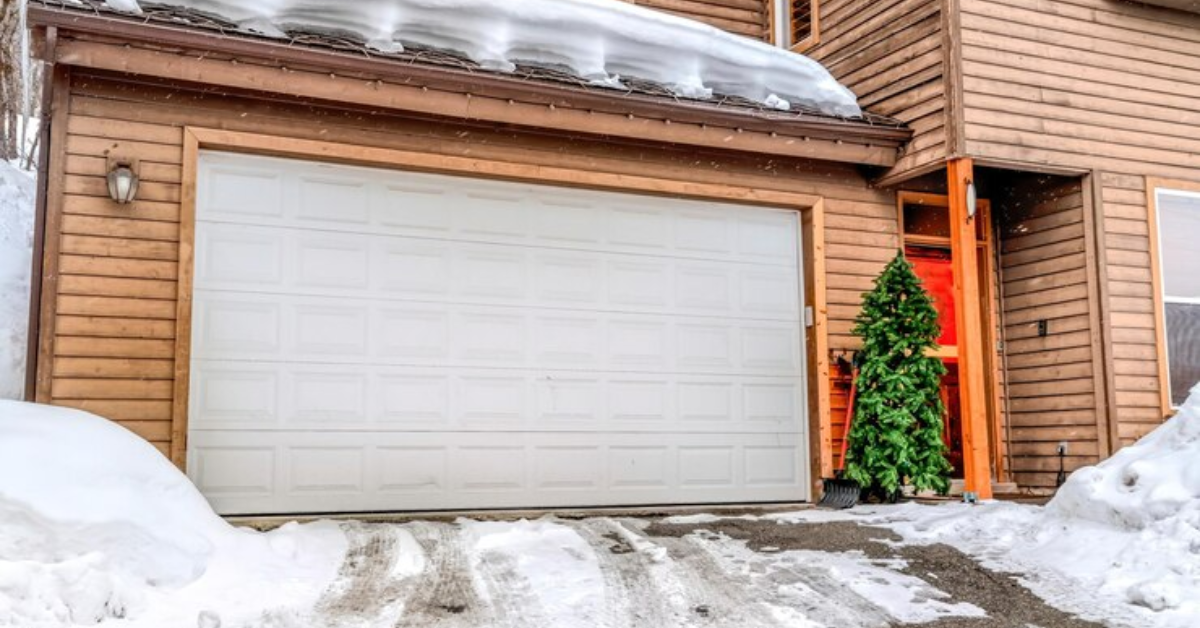Garage Door Spring Failure: Signs & Replacement Timing
Garage door springs stand as integral components within the complex machinery of garage doors, often overlooked yet indispensable in ensuring their seamless operation. These springs play a pivotal role in counterbalancing the weight of the door, enabling controlled movements during opening and closing. Understanding the significance of these springs involves delving into their essential role and the variations in types that exist.
Garage door springs stand as crucial components, their significance paramount in the seamless functioning of garage doors. Serving as the force behind the effortless operation of garage doors, these springs act as the muscle in the system. They balance the door's weight, easing the burden on the opener and facilitating smooth movements. Without these springs, the operation of garage doors would become laborious, potentially leading to strain on the opener mechanism and compromising overall safety and functionality.
Types of Garage Door Springs
Two primary types of garage door springs commonly exist: extension springs and torsion springs. Extension springs, usually found in older garage door systems, stretch and contract to facilitate door movement. In contrast, torsion springs, more prevalent in modern setups, twist to store and release energy, providing a smoother and more controlled movement. Understanding the distinctions between these spring types is vital in comprehending their functioning and the specific signs that signal impending failure or wear.
Grasping the importance of garage door springs and comprehending the variations among different types sets the stage for recognizing the signs of failure and the optimal timing for replacement. This exploration into the world of garage door springs unveils their critical role and sets the groundwork for identifying potential issues, ensuring timely replacements, and maintaining the overall
efficiency and safety of garage door systems.
Signs of Worn Springs
Visual cues often serve as primary indicators of deteriorating garage door springs. One common visual sign is when the springs appear stretched, elongated, or visibly worn. Over time, these springs lose their tension and resilience, causing them to appear slack or sagging. Additionally, rust or corrosion on the springs' surface can indicate wear, impacting their structural integrity. Any signs of gaps or separation within the coils are also potential visual cues of spring deterioration. Observing these visual indicators is crucial in identifying potential issues before spring failure occurs.
Noises Associated with Worn Springs
Worn garage door springs often emit distinct noises during door operations, signaling underlying issues. One prevalent sound is a squeaking or creaking noise when the door is in motion. This noise arises from the springs rubbing against other components due to diminished lubrication or wear. Another audible sign is a banging or popping sound, indicating potential strain or imbalance within the springs. Furthermore, any unusual grinding or scraping noises during door movements can signify significant wear on the springs, demanding immediate attention. Recognizing these auditory cues aids in early detection and prompt resolution of spring-related issues.
Understanding these signs, whether visual or auditory, is essential for homeowners in maintaining the functionality and safety of their garage door systems. Regular visual inspections and keen attention to abnormal sounds during door operations enable timely interventions, ensuring the timely replacement of worn springs before they lead to potentially hazardous situations or door malfunctions.
Risk Factors and Safety Concerns
Faulty garage door springs pose significant safety risks, potentially leading to hazardous situations. When springs are worn or damaged, they lose their ability to effectively support the weight of the garage door. This can result in sudden spring breakage or failure, causing the door to slam shut unexpectedly. Such an event not only risks damaging property but also poses a severe threat of injury to anyone in proximity to the door. Also, the sudden release of tension from a broken spring can propel metal fragments or components with significant force, further increasing the risk of injury or property damage.
The impact of faulty garage door springs extends beyond safety risks to affect the overall functionality of the door. Springs play a crucial role in balancing the door's weight, allowing for controlled and smooth movements during opening and closing. When springs are worn, the door may become imbalanced, leading to erratic movements or failure to remain in the open or closed position. This instability compromises the door's safety, potentially causing it to unexpectedly fall shut, increasing the risk of accidents or injuries to individuals or objects underneath. Moreover, malfunctioning springs can place undue stress on the door opener mechanism, leading to premature wear and eventual failure.
Recognizing these safety concerns associated with faulty garage door springs is paramount for homeowners. Regular inspections, prompt identification of worn springs, and immediate replacement mitigate the risks of accidents or injuries caused by spring failure. Prioritizing the maintenance and timely replacement of worn springs ensures not only the functionality but also the safety of garage door systems, safeguarding both property and individuals from potential hazards.
When to Replace Garage Door Springs
Several indicators signal the need for garage door spring replacement. One prominent sign is the visible wear and tear on the springs, such as stretching, sagging, or visible gaps within the coils. Rust or corrosion on the springs' surface is another significant indicator, as it compromises their structural integrity. Additionally, when the door exhibits imbalances, operates erratically, or fails to remain open or closed properly, it suggests potential spring wear. Unusual sounds during door operations, like squeaking, grinding, or popping noises, are further indicators demanding attention. If any of these signs are present, prompt replacement of garage door springs is advisable to prevent potential hazards or door malfunctions.
Professional Inspection Guidelines
Professional inspection is important in determining the optimal timing for garage door spring replacement. Qualified technicians follow specific guidelines during inspections to ascertain spring condition accurately. They visually examine the springs for signs of wear, corrosion, or damage. They also test the door's balance and operation, ensuring smooth movements without abrupt stops or erratic behavior. Moreover, professionals assess the tension and alignment of the springs to determine their functionality accurately. Utilizing specialized tools and expertise, these inspections offer a comprehensive evaluation, providing homeowners with precise recommendations regarding spring replacement.
Adhering to these indications and professional inspection guidelines is fundamental in determining the right time for garage door spring replacement. Seeking professional assistance when observing signs of wear or irregularities ensures accurate assessment and timely replacement, guaranteeing the continued safety and functionality of garage door systems.
DIY Vs Professional Replacement
DIY spring replacement might seem feasible for some homeowners, but it entails significant risks and complexities. One primary consideration is the high level of danger associated with handling garage door springs. These springs are under extreme tension and require specialized tools and expertise for safe removal and installation. Without proper knowledge and experience, attempting DIY replacement poses a severe risk of injury or property damage. Moreover, incorrect installation or inadequate tension adjustment can lead to door malfunctions, compromising safety and functionality. Therefore, unless individuals possess extensive experience and proper equipment, DIY spring replacement is strongly discouraged due to the inherent risks involved.
Benefits of Professional Spring Replacement
Professional spring replacement offers numerous benefits, primarily centered around safety, expertise, and precision. Trained technicians have the requisite knowledge, tools, and experience to execute spring replacement safely and accurately. They possess a deep understanding of garage door mechanisms, allowing them to assess spring conditions, select appropriate replacements, and perform the installation with precision. Additionally, professional services often provide warranties, ensuring quality workmanship and covering any issues that may arise after replacement. Moreover, professionals adhere to strict safety protocols, mitigating the risks of accidents or damage during the replacement process. Opting for professional replacement ensures peace of mind, optimal safety, and reliable functionality of garage door systems.
Considering the high risks and technical complexities involved, entrusting garage door spring replacement to trained professionals is highly recommended. Professional services offer expertise, safety assurances, and a guarantee of reliable functionality, outweighing the risks and uncertainties associated with DIY replacement attempts.
Spring Maintenance for Longevity
- Regular maintenance is crucial for extending the lifespan of garage door springs.
- Keep the springs clean to prevent debris or dirt buildup, which can affect functionality.
- Wipe down the springs regularly to avoid grime or corrosion accumulation.
- Apply a light coat of lubricant designed for garage door springs to reduce friction and maintain performance.
- Conduct periodic inspections for signs of wear, such as stretching or corrosion.
- Early detection through inspections allows for timely interventions to prevent further deterioration, ensuring continued efficiency and durability of garage door springs.
Prolonging the Lifespan of New Springs
When installing new springs, several strategies can further prolong their lifespan. Ensuring proper tension adjustment during installation is crucial, as incorrect tension can lead to premature wear. Opting for high-quality springs that are suitable for the specific door type and weight ensures enhanced durability. Additionally, regular inspections and lubrication, as mentioned in maintenance tips, apply equally to new springs to maintain their optimal functionality. Moreover, following manufacturer guidelines and recommended maintenance schedules for new springs aids in maximizing their lifespan. By adhering to these strategies, homeowners can optimize the performance and longevity of newly installed garage door springs.
Cost Considerations
The pricing for replacing garage door springs is subject to variation, contingent upon numerous influencing factors. One significant consideration is the type and quality of springs chosen for replacement. High-quality springs, designed for specific door weights and durability, may entail a higher upfront cost but offer enhanced longevity and reliability. Additionally, the cost may vary depending on the number of springs needing replacement, as some garage door systems utilize one or multiple springs. Labor costs for professional installation are another crucial factor influencing the overall expense. Furthermore, additional components or repairs required due to spring-related damage or malfunctions can contribute to the overall replacement cost. Considering these factors is essential in budgeting for garage door spring replacement.
Expected Timeframes for Replacement
The timeframe for garage door spring replacement typically varies based on several factors. Professional technicians can usually complete the replacement within a few hours, depending on the complexity of the task and the number of springs requiring replacement. Generally, a single spring replacement might take less time compared to replacing multiple springs or addressing additional repairs. However, timeframes may vary based on individual circumstances, such as the availability of replacement parts, the door's condition, or any unexpected complications encountered during the process. Understanding the estimated timeframes for replacement assists homeowners in planning for potential disruptions and allows for adequate scheduling to minimize inconvenience.
Tips for Preventing Garage Door Spring Issues
- Encourages proactive measures to prevent potential spring issues.
- Recommends avoiding excessive strain during emergencies or power outages to reduce stress on the springs and opener mechanism.
- Advises being mindful of the door's weight capacity to maintain spring longevity.
- Emphasizes regular inspections for balanced door movements to detect potential issues early.
- Stresses the importance of educating household members on proper door usage and maintenance practices to prevent unnecessary strain on the springs.
Conclusion
Garage door remotes serve as the catalyst for effortless access, unlocking the gateway to convenience with each press. Understanding their mechanics, from transmission signals to their interaction with door motors, unveils the magic behind their functionality. By deciphering remote frequencies and bolstering security measures, users safeguard seamless operations. Embracing the synergy between remotes and motors illuminates how these devices trigger the doors to open, transforming mundane actions into moments of ease and efficiency. Ultimately, the garage door remote embodies not just access but a gateway to a world of convenience, redefining the narrative of everyday accessibility.




